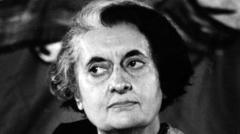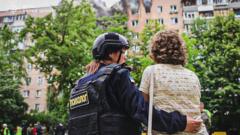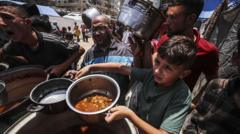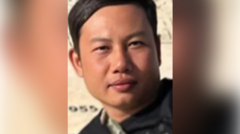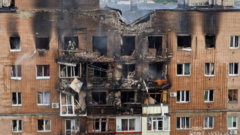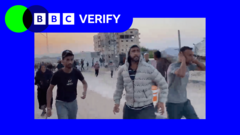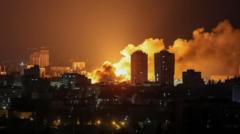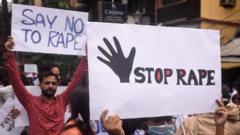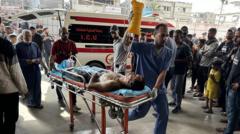The Kumbh Mela festival in Prayagraj turned deadly when a crush resulted in at least 30 fatalities and over 60 injuries. Chaos erupted as pilgrims rushed to partake in a significant ritual bathing day, highlighting concerns about crowd management during this massive religious event.
Tragedy Strikes at Kumbh Mela as Crowd Crush Claims 30 Lives
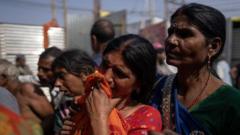
Tragedy Strikes at Kumbh Mela as Crowd Crush Claims 30 Lives
A devastating crowd crush during the Kumbh Mela festival in Prayagraj leaves dozens dead and many more injured.
At least 30 people have tragically lost their lives in a crowd crush at the ongoing Kumbh Mela festival in Prayagraj, India, which is known as the world's largest religious gathering. The incident occurred early on Wednesday morning as thousands of devotees congregated on the riverbanks for a significant day of ritual bathing.
Initially reported by local officials, approximately 60 others sustained injuries during the chaos. The hours following the incident saw significant delays in relaying accurate information to the public, prompting criticism from opposition leaders who accused authorities of hiding details. Prime Minister Narendra Modi expressed his condolences to the families of the victims, while many pilgrims desperately sought news of their missing relatives.
Eyewitnesses described harrowing scenes of pandemonium with discarded belongings like clothes and shoes scattered throughout the area as individuals attempted to escape the danger. Senior police officer Vaibhav Krishna stated, "Unfortunately, 30 of those devotees have died," confirming that some victims have yet to be identified.
Early reports indicated serious injuries, yet there was confusion regarding the death toll, leading to incarcerated reporters and restricted access to the main hospital. The government reported that more than 50 million people had participated in the holy bath earlier that day.
The Kumbh Mela, celebrated every twelve years at Sangam—the confluence of the Ganges, Yamuna, and mythical Saraswati rivers—draws pilgrims from across India and beyond. The festival’s significance lies in the belief that bathing in the waters cleanses sins and offers salvation. The most important day of the festival saw officials anticipating up to 100 million attendees, amid burgeoning excitement that quickly morphed into a nightmare.
The surge began after midnight when many pilgrims were still resting around barricades, unaware of the rush that would soon ensue. As confusion spread in the crowd, many people fell to the ground while others were pushed and trampled. Poonam Singh, who had come with seven family members, expressed concern as all of them went missing amidst the chaos.
While authorities attempted to manage the situation, announcements urging pilgrims to divert to other locations for bathing came too late. Many were already determined to proceed with their religious observance, crowding paths leading to the confluence. Eyewitness statements depict an overwhelming sense of disarray, where individuals feared for their safety.
The aftermath left many pilgrimage-goers in search of loved ones, with scattered belongings serving as haunting reminders of the disaster. Crowd management at such large gatherings has been scrutinized, especially given the historical context of similar incidents in the past.
Political leaders criticized the government for a lack of preparedness and attributed the tragedy to negligence in managing the enormous crowds. Opposition leader Rahul Gandhi claimed that the focus on VIP movements over daily devotees contributed to the catastrophe. As officials declared order restored, many pilgrims urged stricter crowd control measures in the future to prevent further incidents during such significant events.

